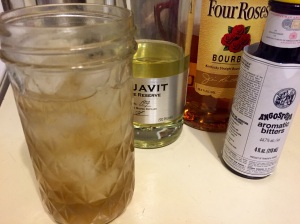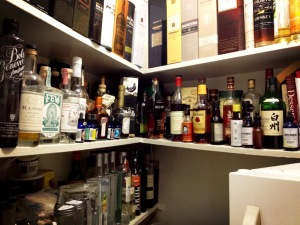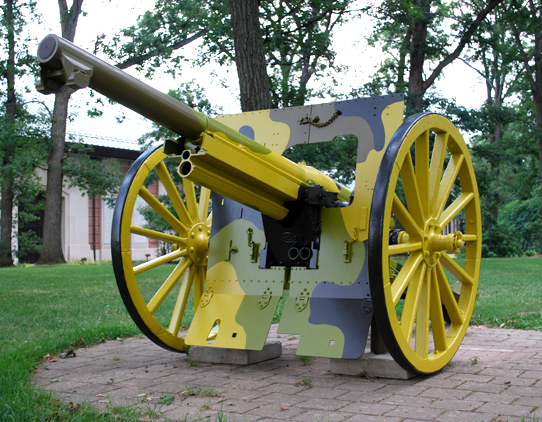New Year’s Eve is only a couple days away, and a lot of cocktail guides are going to give you a list of specific drinks you can prepare for whatever party you’re attending.
This is going to be a little different. Since we’re located in Chicago, the capital of improv, I’m providing you a guide on how to add improvisation to your cocktail-making. No matter what your host has at their bar, you should be able to mix a drink or two for yourself or fellow guests. Here are the assumptions I’m working under:
You are a guest at the party. Maybe you enjoy pre-batching punch, mulled wine, or complex cocktails and bringing them to a party. But even if you do, sometimes circumstances prevent you from bringing more than a few bottles. And if you’re attending more than one party? Yeah, you’ll want this flexibility.
Your host has some basics, like citrus juice, soda, sugar, a few spirits, and maybe even a mixer or two. I’m also assuming that there will be more than enough champagne and sparkling wine to go around.
You only have capacity to bring a few things. I, for one, cannot afford Jim Meehan’s bartender bag, so I’m limited to what I can carry in my trusty backpack. This means a couple bottles of spirits, a couple smaller bottles/jars for mixers, and a few small bottles of bitters.
With those in mind, here are some simple cocktails using the limited ingredients you might have in front of you, Iron Chef-style. I’ve also broken out a a recipe in each category, variations on existing cocktails to surprise you and your fellow revelers.
Fizzy & Light
We start with a few lighter drinks that are easy to assemble with few ingredients. The drinks in this category are variations on “spirit + carbonated drink,” with juice, sugar, and liqueurs added to the mix. These are simple drinks that you can sip as other guests arrive, or if you want something lighter that isn’t champagne.
Club Soda: The simplest style of drink is your basic highball — 2 oz of your spirit of choice, over ice in a narrow glass, topped with carbonated water. The base can be as simple as vodka or as sophisticated as Japanese single malt whisky. If you add ½ oz of fresh lime juice to the recipe, you’ve got a Rickey, the official cocktail of our country’s capital. If, instead of lime, you add ¾-to-1 oz of fresh lemon juice and ½-to-¾ oz of syrup, you get a Collins. From there you start getting into the various Fizz cocktails, with more complex recipes, but still the basic ratios.
Cola: Whether you’re using Coca-cola or craft sodas, the cola is a versatile mixer. Again, we start with the very basic recipes: whiskey and cola, rum and cola, brandy and cola, etc. It’s like the highballs mentioned above — 2 oz of your chosen spirit, over ice in a narrow glass, topped with cola. Add lime juice into the mix with rum, and you have a Cuba Libre; do the same with tequila and you get a Mexicola. Add Angostura bitters to a bourbon and cola, and you get a Buckaroo, which is my go-to highball.
Ginger Ale/Beer: By now, you should have the basic ratios of this category down. Brandy plus bitters and ginger ale is a Horse’s Neck. Rum with ginger beer is a Dark & Stormy. Gin with lemon juice (and the spent lemon) topped with ginger ale is a gin buck. Vodka with lime juice (and the spent lime) topped with ginger beer is a Moscow Mule. Gin with lime juice, sugar, and mint leaves — and topped with ginger beer — is a Gin-Gin Mule. And so on.
It’s from this last group that I’m pulling out a specific recipe. This variation of the Suffering Bastard was a suggestion from a friend:
@dashjperiod @TravisJCook I was also thinking about wanting to try the Suffering Bastard with aquavit instead of gin.
— Ryan Halfhill (@VikingDiesel) December 18, 2014
Since I’m a sucker for anything mixed with aquavit, I give you the Viking Bastard.
Viking Bastard
 1 oz — whiskey (rye, or a bourbon with abundant rye content)
1 oz — whiskey (rye, or a bourbon with abundant rye content)
1 oz — aquavit
¼ oz — fresh lime juice
dash of Angostura bitters (or Boker’s, if you got ’em)
ginger ale
Combine the first four ingredients in a shaker with ice. Shake and strain into an ice-filled collins glass. Top with ginger ale, garnish with a mint sprig or lime wedge.
Based on your palate, this is a good candidate to mix with ginger beer instead of ginger ale. My personal preference would be a ginger beer like Bundaberg, and if your host has some, you’ve found a good party. Remember that your sweetness is only coming from the ginger ale/beer, so adjust the lime juice if necessary.
Champagne Cocktails
If there’s one thing you can count on at a New Year’s Eve party, it’s the abundance of sparkling wine. Naturally, this means that such parties are fertile breeding grounds for champagne cocktails. We have the Death in the Afternoon, Hemingway’s combination of absinthe and champagne. There’s the generic “Champagne Cocktail,” which is nothing more than bitters, sugar, and champagne. You can also switch out the sugar for a splash of liqueur to give the cocktail a bit of flavor.
The celebrity of champagne cocktails, though, is the classic French 75. It’s both simple and delightful: gin, sugar (or simple syrup), fresh lemon juice, topped with brut champagne. The formula also works with other spirits; cognac is a common replacement, bourbon versions are plentiful, and there’s even aquavit versions (usually referred to as a “Danish 75”). There are also plenty of variations that bring in liqueurs and flavored syrups, like the Devereux or the Ten Cent Pistol.
Since I’m a citizen of Chicago, I’ve come up with a Chicago-centric version of this template. I’ve left the base spirit as gin, but with the plethora of craft distilleries today, there are some variations on flavored vodka and gin (genever, anyone?) that might prove tasty. And in case you don’t want to give malört to your friends, an alternate version is listed below.
the Broken Resolution
1½ oz — gin
¾ oz — raspberry syrup or grenadine
½ oz — fresh lemon juice
¼ oz — malört
champagne
Combine the first four ingredients in a shaker with ice. Shake and strain into a collins glass half-filled with ice. Top with champagne. You can garnish with raspberries, or a swath of orange peel, or a lemon curl.
You might want to play with your sparkling wine options — Chicago’s infamous wormwood liqueur will shine through even with that little amount, and a super-dry bubbly might not mesh well. If you prefer not to serve malört to your friends, replace it with ½ oz of raspberry liqueur or cherry brandy, and replace the syrup with ½ oz of simple syrup. This will give you a lightly tart cocktail that’s closer to the original French 75 recipe.
One note: champagne cocktails seem light because of the sparkling wine component. But these have a higher alcohol content than the last category, and studies indicate that most imbibers will feel the effects quicker thanks to the bubbles. There’s a reason the French 75 was named after a piece of WWI artillery.
the Heavyweights
We finish off with the heavyweights of the night. These aren’t the kind of drinks that sneak up on you with their alcohol content like the sparkling drinks. No, you know that your cocktail is essentially “booze + other booze + bitters,” maybe with a little not-booze. Maybe.
This is the realm of the Manhattan (2 oz rye, ¾ oz sweet vermouth, dash of bitters) and the Martini (2 oz gin, ½ oz dry vermouth, orange bitters is my preferred recipe). But it’s also the category of classic drinks like the Martinez and the Rusty Nail, and the lesser-known cocktails of yesteryear like the White Lily and the Star Cocktail.
I’m also putting hair-of-the-dog cocktails for New Year’s morning in this group. The Corpse Reviver #2 is a perfect example of this — gin, fortified wine, orange liqueur, lemon juice, and a dash of absinthe to wake you up. The Bloody Mary is less boozy, but still an eye-opener (especially if you switch out the vodka with the herbal aquavit).
My favorite would be an Old Fashioned (you can take the boy out of Wisconsin, but…). It’s simple style of cocktail, but also an exceedingly drinkable one. The standard formula is fruit (I prefer only a peel), sweetener, bitters, and spirit of choice. A good example is the Nordic Old Fashioned, an aquavit cocktail I came up with and often partake in. For the new year, I’m leaving out the brandy, but still making my Old Fashioned with a favorite sweetener from my native state: maple syrup.
Maple Old Fashioned
 2 oz — bourbon
2 oz — bourbon
¼ oz — real maple syrup
a few dashes of bitters (cherry bark vanilla, barbecue, or Angostura)
swath of orange peel
In a rocks glass, muddle the orange peel with the bitters and maple syrup. Add bourbon, then ice, and stir well. Feel free to grab piece of bacon from the New Year’s breakfast for additional garnish.
The key ingredients to this recipe are the bitters and the syrup. For the latter, you’re using real maple syrup. Using the “contains 10% maple syrup” stuff ought to be punishable by law. For the bitters, I’ve provided suggestions that will move the cocktail in different (but tasty) directions. Using barrel-aged or Jerry Thomas bitters wouldn’t be a bad way to go, either.
The Next Day
I’ve left off a few categories — hot drinks like the Toddy, classic sour cocktails like the Gimlet or Sidecar — but the three categories above should keep you with a drink in hand all the way to the night’s obligatory song. Skål!








